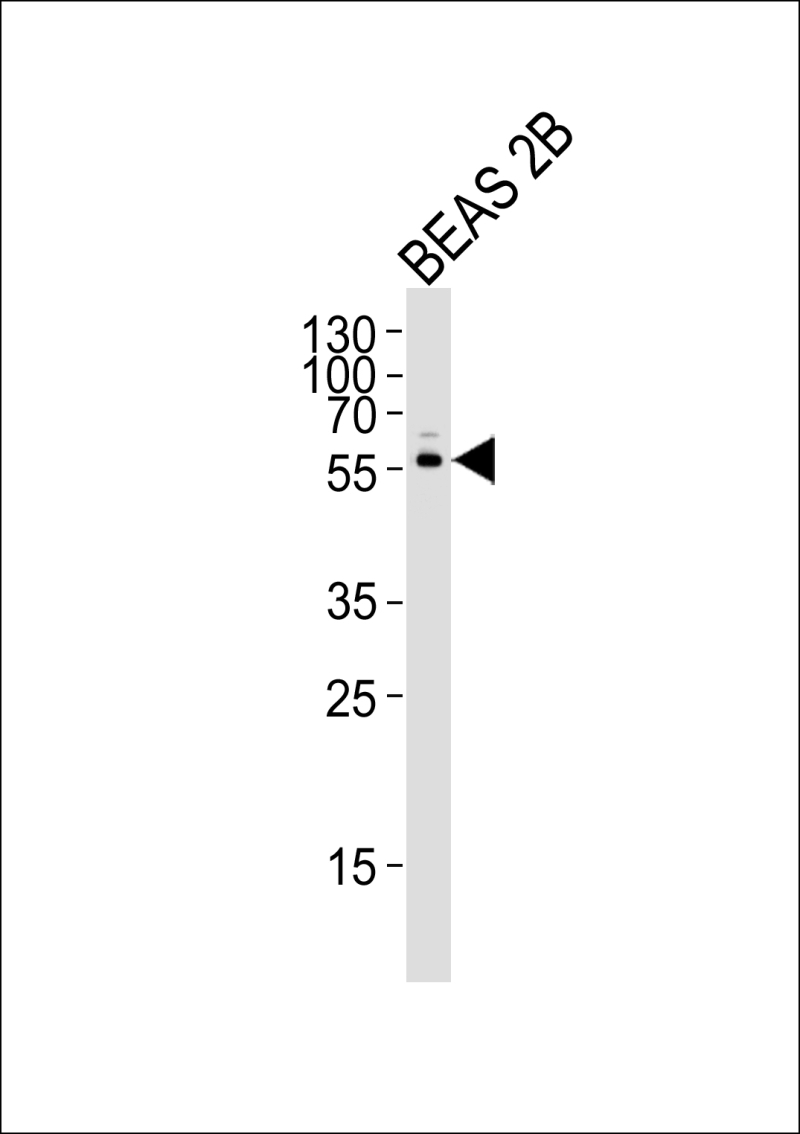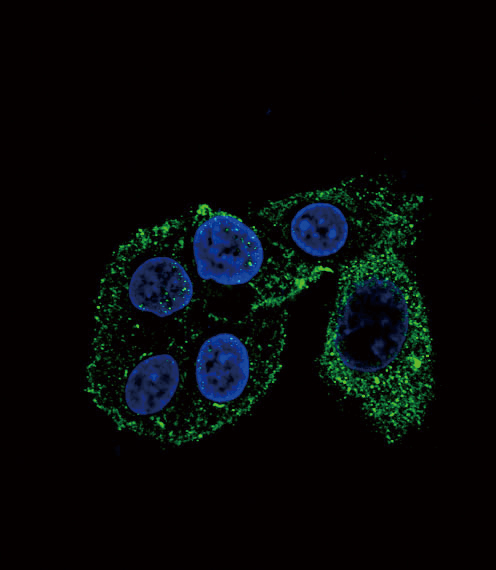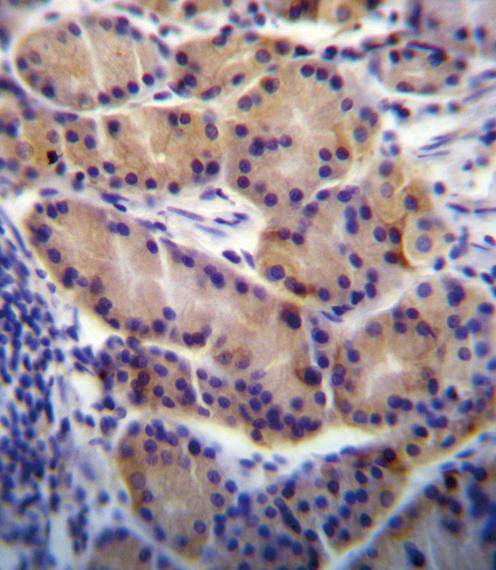



| WB | 1/1000 | Human,Mouse,Rat |
| IF | 咨询技术 | Human,Mouse,Rat |
| IHC | 1/100-1/500 | Human,Mouse,Rat |
| ICC | 1/10-1/50 | Human,Mouse,Rat |
| FCM | 咨询技术 | Human,Mouse,Rat |
| Elisa | 咨询技术 | Human,Mouse,Rat |
| Aliases | Cytochrome P450 2S1, CYPIIS1, CYP2S1 |
| Entrez GeneID | 29785 |
| WB Predicted band size | 55.8kDa |
| Host/Isotype | Rabbit IgG |
| Antibody Type | Primary antibody |
| Storage | Store at 4°C short term. Aliquot and store at -20°C long term. Avoid freeze/thaw cycles. |
| Species Reactivity | Human |
| Immunogen | This CYP2S1 antibody is generated from rabbits immunized with a KLH conjugated synthetic peptide between 399-428 amino acids from the C-terminal region of human CYP2S1. |
| Formulation | Purified antibody in PBS with 0.05% sodium azide. |
+ +
以下是3篇关于CYP2S1抗体的参考文献及其摘要概括:
---
1. **文献名称**: *"Expression and localization of CYP2S1 in human respiratory tissues"*
**作者**: Rivera SP, Saarikoski ST, Hankinson O
**摘要**: 该研究使用特异性CYP2S1抗体,通过免疫组化技术揭示了CYP2S1蛋白在人呼吸道(如支气管上皮细胞和肺泡巨噬细胞)中的高表达,提示其在肺部代谢及炎症反应中的潜在作用。
---
2. **文献名称**: *"CYP2S1-dependent bioactivation of 5.6-dimethylxanthenone-4-acetic acid in colorectal cancer cells"*
**作者**: Wójcikowski M, Gołembiowska K, Daniel WA
**摘要**: 研究者通过Western blot和免疫荧光技术,利用CYP2S1抗体证实了结肠癌细胞中CYP2S1的表达,并发现其参与前药5.6-DMAA的代谢激活,为靶向治疗提供了依据。
---
3. **文献名称**: *"Cytochrome P450 2S1: a potential biomarker for tumor progression in breast cancer"*
**作者**: Karlgren M, Miura S, Ingelman-Sundberg M
**摘要**: 该研究开发了高亲和力CYP2S1抗体,发现乳腺癌组织中CYP2S1表达水平与肿瘤侵袭性相关,提示其可作为预后标志物及药物开发靶点。
---
**备注**:若需获取全文,建议通过PubMed(https://pubmed.ncbi.nlm.nih.gov)或ResearchGate平台输入标题或作者进行检索。部分研究可能需要订阅权限。
The CYP2S1 antibody is a crucial tool for studying the CYP2S1 enzyme, a member of the cytochrome P450 superfamily involved in metabolizing endogenous and exogenous compounds, including drugs, environmental toxins, and signaling molecules. Unlike other CYP isoforms predominantly expressed in the liver, CYP2S1 is widely detected in extrahepatic tissues, such as the skin, lungs, and gastrointestinal tract, suggesting roles in localized detoxification or bioactivation processes. It metabolizes retinoids, prostaglandins, and certain carcinogens, and has been implicated in inflammatory responses, cancer progression, and cellular oxidative stress regulation.
CYP2S1 antibodies enable researchers to detect and quantify the enzyme’s expression and localization in tissues or cell lines using techniques like Western blotting, immunohistochemistry (IHC), or immunofluorescence (IF). These antibodies are particularly valuable in cancer research, as CYP2S1 overexpression has been linked to tumor growth and chemoresistance in cancers such as colorectal and lung carcinoma. However, challenges persist in antibody specificity due to potential cross-reactivity with other CYP family members or splice variants. Validation using knockout controls or siRNA-mediated silencing is critical.
Commercially available CYP2S1 antibodies vary in host species, clonality, and epitope targets, requiring careful selection based on experimental needs. Ongoing studies aim to clarify CYP2S1’s physiological roles and its potential as a therapeutic target, underscoring the importance of reliable antibody tools in advancing this field.
×